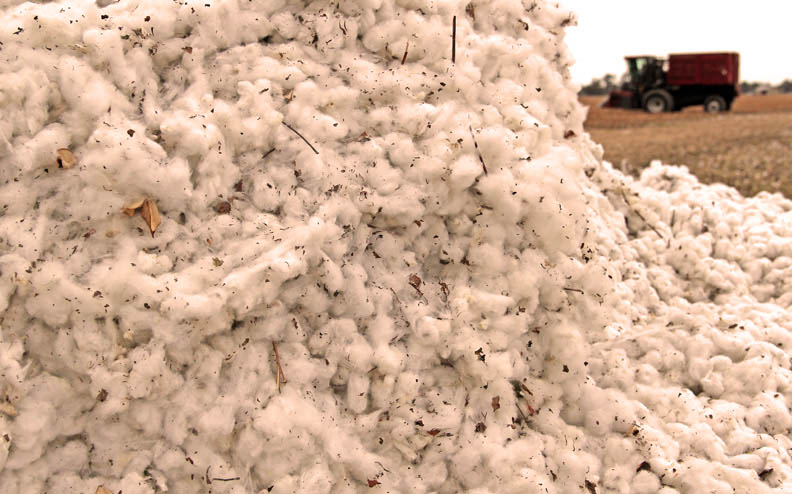May 16, 2013

Research conducted at the Nonwovens and Advanced Materials Laboratory at Texas Techs' Institute of Environmental and Human Health (TIEHH) shows that low-grade cotton is highly effective at absorbing crude oil spills. The study, published in the most recent issue of the American Chemical Society journal Industrial & Engineering Chemistry Research, reveals that 1 pound of low-micronaire cotton can absorb more than 30 pounds of dense crude oil. In addition, the natural waxiness of raw, unprocessed cotton fiber keeps water out, making cotton an efficient and effective material for addressing ocean-based oil spills. The study was supported in part by Cotton Incorporated.
The new study includes some of the first scientific data on unprocessed cotton’s use as a crude oil sorbent. Dr. Seshadri Ramkumar, lead author of the study and manager of the Nonwovens and Advanced Materials Laboratory at Texas Tech’s TIEHH said he and his colleagues found that low-micronaire cotton – one of the lowest-quality types of cotton – is highly effective at picking up oil.
“About 10 percent of the cotton grown in West Texas is low micronaire,” Ramkumar said. “It doesn’t take a dye well, so it has little value as a textile fiber. However, because it is less mature, more of it can be packed into a given area. We show through sophisticated testing that low-micronaire cotton is much finer and can pick up more crude oil. In contrast to synthetic sorbents, raw unprocessed cotton with its high crude oil sorption capacity and positive environmental footprint make it an ecologically-friendly sorbent for oil spill cleanups.”
Ron Kendall, director emeritus at TIEHH and special assistant to the president, said the Deepwater Horizon disaster emphasized the need for better ways of cleaning up oil spills.
“One of the things we realized from the Deepwater Horizon disaster is we didn’t have the best tools for cleanup, and the technology wasn’t right for the booms,” Kendall said. “This discovery that low-micronaire cotton, which is the least valuable cotton, can absorb as much crude oil as it does is a breakthrough discovery. It gives us an excellent tool for cleanup of shorelines, animals and ecologically sensitive areas as well as a new technology for booms that can stop oil sheen moving into wetlands.”
Dr. Kater Hake, senior vice president of Agricultural & Environmental Research at Cotton Incorporated lauded the findings as the latest example of cotton’s environmental progress. “Cotton research over the past 20 years has enabled cotton growers in the U.S. to significantly reduce pesticide and irrigated water applications, and has provided access to the nutritional benefits of cottonseed. The use of low-micronaire cotton to combat crude oil spills is another example of how the industry is eliminating waste and maximizing the environmental value of cotton.”
Laboratory work using crude oil was performed by graduate student Vinitkumar Singh. Both Cotton Incorporated and The CH Foundation contributed funds to this research.
More from Western Farm Press
Supreme Court stuffs seed patents back in Pandora’s box
Photos: Ageless veterans soar once again
Agricultural pioneers battling water scarcity
Wine skeptic takes on climate change report
Honey bee decline all about colony stress
7 big questions for the farm bill debate
You May Also Like




